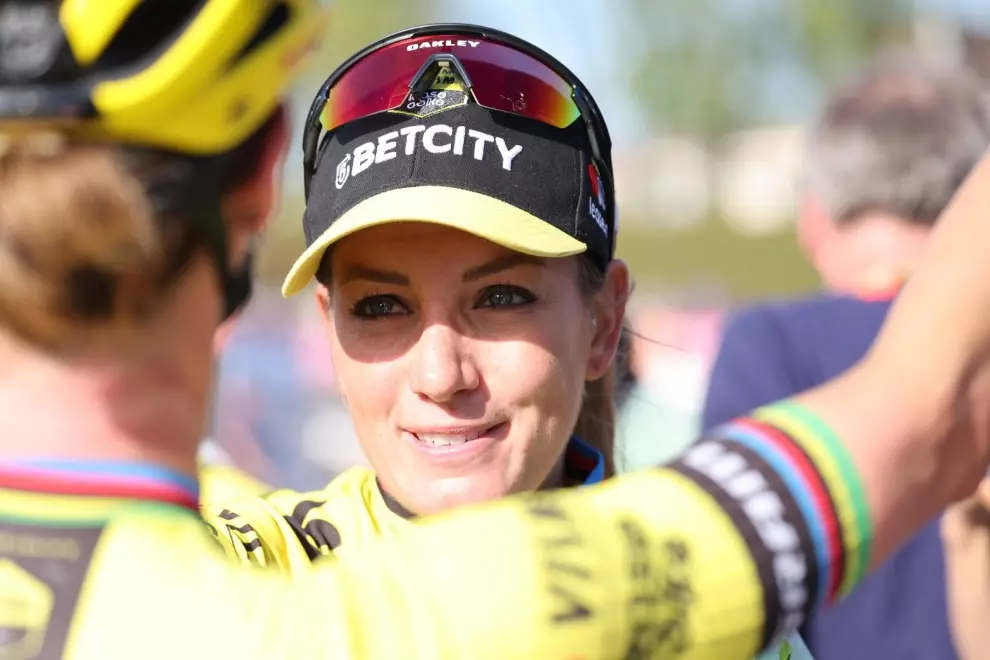Despite the fact that most of the women were coming off 10 days of racing at Giro Rosa, they put on one heck of a show, culminating in what was among the best finishes in all the Tour. Ending a four-climb race, Annemiek van Vleuten overtook Anna van der Breggen through pure force of will in the final metres. Cecilie Uttrip Ludwig topped it off with one of the most touchingly earnest interviews the world of professional sports has seen in recent years, sitting on the ground exhausted post-race, she pleaded intently with fans to support women’s cycling.
Needless to say, the women did their part and proved they have what it takes to provide entertainment of the highest calibre, now it’s time for sponsors and organizers to do theirs. Although there has definitely been some good news recently, with UCI President David Lappartient confirming that a mandatory minimum wage for women will be enforced by 2020, it is still important to remain soberly aware of how much still needs to be done.
Part of this work means crunching the numbers and making sure that the vital states are in place when the time comes to sit at the negotiating table. Luckily, last month Cycling News released a super informative data report underlining the disparities that exist between men’s and women’s cycling. While we suggest checking out the whole article, we’ve highlighted a few of the numbers for you here.
Time spent racing
The number of races on the women’s circuit versus the men’s doesn’t seem too shocking at 23 to 37, but when you factor in the stages and the total number of days spent on the track, the gap is huge. Women spend 52 days racing, compare to 179 for men. In other words, for every day women spend racing, men spend 3.4.
Race distances
On the men’s Grand tour, the maximum number of permitted stages is 23. For the women, with the exception of the Giro Rosa, 6 is the limit. The average distance of a stage on the men’s tour is also 40km longer than the women’s 140 km. Although the debate remains open as to whether or not the additional stages really make for better racing, the fact that the men are allowed over 3 times the amount of stages reinforces a distorted myth about the capabilities of women’s body that we would like to see put to bed for good.
Erasing history?
The argument against the possibility of a women’s Tour de France is also greatly deflated when we remind ourselves that one actually existed for 6 years between 1984-1989. There were 17 stages in the women’s 1985 Tour de France and in a 2013 petition, 97,000 people signed to have the woman’s tour brought back. The problem here? There are 0 words devoted to the women’s race in the history section of ASO’s Tour de France website, a sign that it’s a discussion the organizers would rather not have.

Let’s talk money
It’s no secret that women’s cycling receives only a fraction of the monetary support that men’s does. Regardless, seeing the numbers laid out is pretty alarming. The minimum wage for a male rider on a Professional Continental team is €30,855 and €38,115 on a WorldTour team. Meanwhile, until that mandatory minimum wage kicks in, 17 % of professional female riders still receive no salary at all, with over 50 % working a second job in order to make ends meet. Only 8 % of women riders earn more than €40,000 annually, and over half have had to reimburse their teams for services like mechanical assistance, medical testing, travel costs to races, bikes, parts, accommodation, meals.
This might be because, compared to the reported £15 million average annual UCI WorldTour men’s team budget (according to Shayne Bannon, Mitchelton-Scott’s General Manager), a typical budget for a top women’s cycling team is a little over $200,000. That means the men have 75 times more money to work with.
How fast can they go?
Annemiek Van Vleuten’s average speed when she won the elite women’s TT world championship in 2017 was, 40.025kph over 21.1km, Tom Dumoulin’s average speed, when he won TT the same year, was 41.626kph over 31km.
Although it’s a notable difference, it is worth asking yourself whether you really see the actual speed during a bike race. Generally, we’re focused on time gaps and the distance remaining. Of course, knowing the profile helps too, and that’s why we need more coverage of the women’s events.
It all comes back to coverage
Still far from where they need to be, the hours of TV broadcasting of women’s races did more than doubled from 310 hours in 2016 to 650 in 2017. When justifying the discrepancies in women’s coverage, the argument is often mounted that interest and viewership determine money. This is partially true, but we need to keep in mind that manufactured demand plays heavily into professional sports. Who knew they wanted to watch men racing bikes from the comfort of their living room until they could? The same holds true for women’s racing. They’ve proven they can put on a thrilling race, let’s help them get the support they need to continue, so we can all enjoy watching what they’ll accomplish next.







